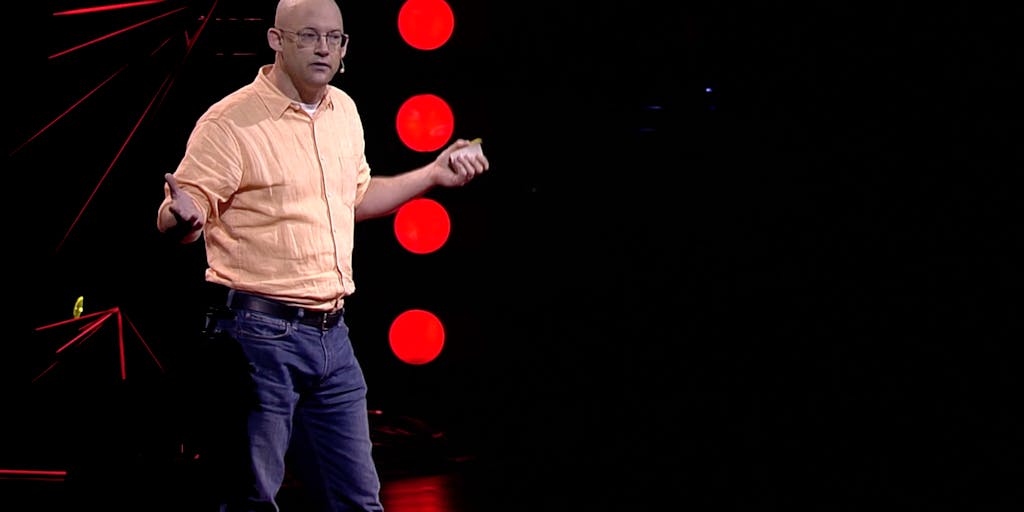
It’s popular these days to argue that a pandemic boost of online education will lead to a wave of college closures. Most colleges just aren’t changing fast enough, the theory goes, and many are risking extinction.
But this kind of rhetoric irks Clay Shirky, the vice provost for educational technologies at New York University and an influential voice on how technology is changing our culture. He thinks the situation is far more complicated than many pundits let on.
“I see people starting with assumptions about what online education can or should do to the price of a college education, and I think not only is what they’re saying wrong, but the background assumptions they’re making about how higher ed works are not even in line with what the American system actually does,” says Shirky.
To help steer the discussion, Shirky started a newsletter last year called “The (Continual) Transformation of Higher Ed.” About once a month, he puts out a new essay about the many complex forces acting on higher ed these days—highlighting some ways true transformation is happening.
We caught up with Shirky for this week’s episode of the EdSurge Podcast, to dig into his arguments and talk about what he sees as important transformations at colleges these days.
Listen to the episode on Apple Podcasts, Overcast, Spotify, Stitcher or wherever you listen to podcasts, or use the player on this page.
EdSurge: What is it that you think is misguided about some of the discussion of how online learning might change higher ed?
Clay Shirky: It’s not about whether or not Zoom becomes the platform or somebody invents some new video tool specific to higher ed or whatever. It’s about: Have Western Governors [University] and Southern New Hampshire [University] figured out how to scale limitlessly, and is the number of students who enroll in higher ed going to continue to shrink, or are we gonna find some way to reverse it and grow?
The thing I’m most addressing in the newsletter is, you can’t even think clearly about what the technology enables or which direction the technology is moving without understanding that there’s some really major macro forces going on here—that they are the platform in which the technology is implemented, not the other way around.
While mega-universities are important, for many students the reason to go to college is for the coming-of-age experience, right?
Exactly. There are a lot of late teenagers for whom the two major life transitions—leaving high school to go to college and leaving college to go work in the world—are at least in part about breaking and reforming their social networks and social connections. People who attend online degree programs are on average older. They’re likely to be married. They’re likely to have children. They’re much more likely to have jobs. They’re more likely to have jobs that don’t have entirely predictable hours. So the question isn’t so much, ‘Is there gonna be a market for the, you know, undergraduates playing Frisbee on the verdant quad?’ Yes, of course, there’ll be a market for that worldwide. That is one of America’s draws for students to come here.
The midpoint between the highly-utilitarian and highly-convenient, cost-capped online degree and hanging around Princeton—we don’t know where that midline is. Right. And it may be that the flagship state schools do fine. They probably will. But the branch campuses and especially the community colleges will suffer in competition with online.
You talk about which kind of colleges are the most innovative these days. And you mentioned the case of Sweet Briar College, a private women’s college which was all over the news a few years ago when it was about to close, but it’s come back. So can you talk about that example?
I remember when Sweet Briar showed up at the front page of The New York Times one day because the trustees voted to essentially wind it down. They did what they thought was the fiscally responsible thing. They said, you know, we’re broke—we’ve got some money in the endowment, but in terms of revenue, all the trendlines are going down. Then people blew up [in frustration]. Students, alumni, faculty, staff, all blew up. The state got involved, and a ‘save Sweet Briar’ plan came together. The trustees rescinded their shutdown notice.
And then Meredith Woo came in as the new president. And in a single summer, they put together this collection of a faculty committee, with input, from a whole variety of sources, and they transformed departments into larger interdisciplinary clusters. They cut the number of majors from 33 to 17. It was massive change in a short period.
That really told me two things about the American system as it is now. First of all, the colleges you’ve heard of are not the ones that will close, and the colleges that will close will not be the ones you’ve heard of. Sweet Briar for whatever reason had a national reputation, even though it was very small, and it had a rich, dedicated alumni network who were willing to come forward and support it with donations. There are a handful of schools whose alumni base will allow them in a moment of crisis to deploy additional resources.
Meredith was a transformative figure, no doubt, but she would not have been able to walk into Sweet Briar as it existed in 2015 and transformed it. It had to close. The trustees effectively had to tell everybody that unless they changed, this college was going away. … Transformation is desperation plus chutzpah. You need something that comes along and tells the community that not transforming is not an option.
Listen to the rest of the conversation on the EdSurge Podcast.